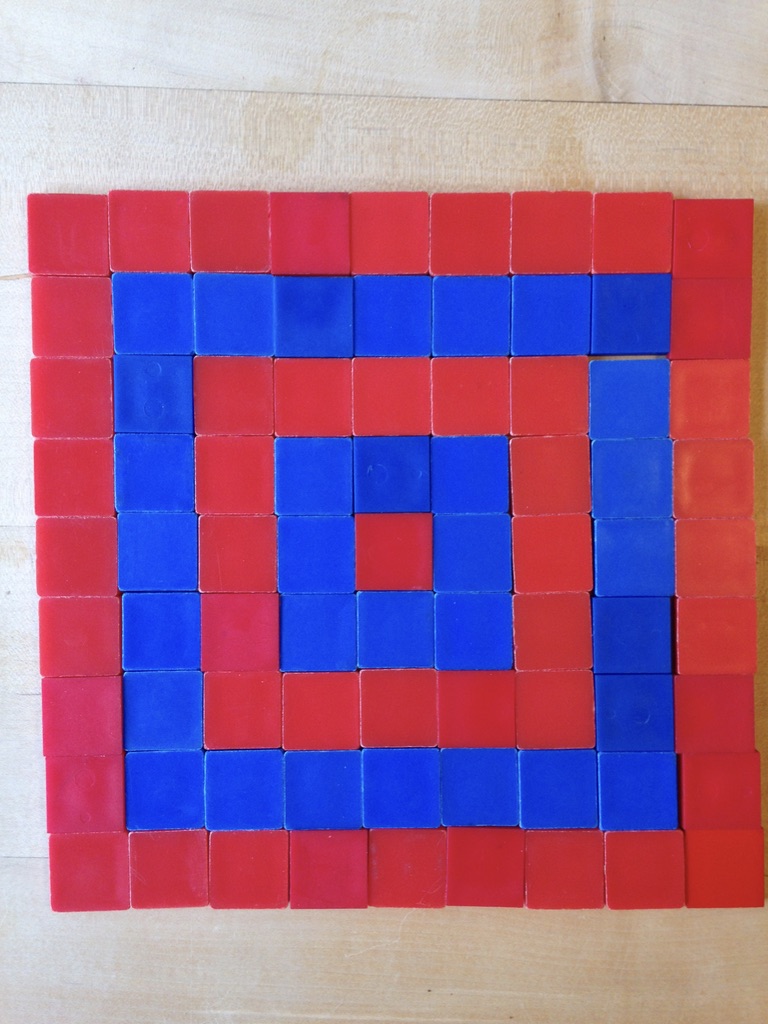This lesson starts easily enough:
you build a few squares out of square tiles, and count how many tiles you need to make each one, and records those numbers.
Then you ask the class: what other numbers of square tiles could you use to build a square?
Write down predictions!
Once students have put forward some guesses,
give them fifteen minutes to build squares of different sizes and write down their list of numbers.
Students may work together as the number of tiles proves insufficient to build the next square.
They can also transition to graph paper and draw out the squares.
The important part is that they build and/or draw the squares, and that they have a written list by the end of the fifteen minutes.
After students have their lists, have them compare them with another classmate to see if they found the same numbers.
Then bring the class together and have the students give you the numbers they found.
They should look like this:
1, 4, 9, 16, 25, 36, 49, 64, 81, 100, …
It’s okay if students don’t get up to the highest numbers.
It’s also okay if students went higher without building every single square.
In fact, it’s great if they start finding patterns that help them predict what the larger square numbers will be.
Important: If there is controversy over which numbers belong on the list, use it.
For example, if some students think that 20 belongs on the list, and others disagree, challenge them prove 20 does or does not belong.
It’s worth mentioning to your students that these numbers, which represent the number of little squares it takes to make a bigger square, are called square numbers. Nifty name, and sensible too.

